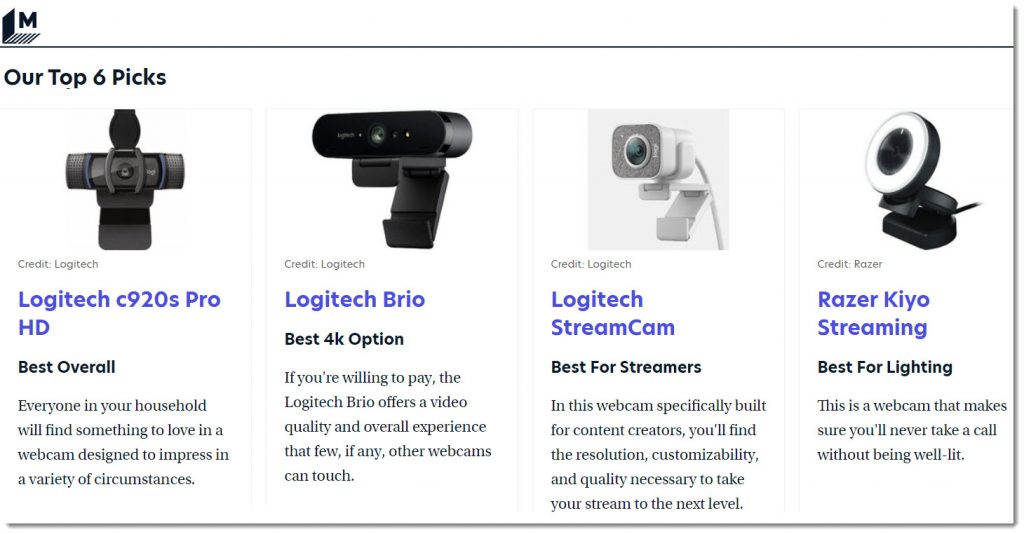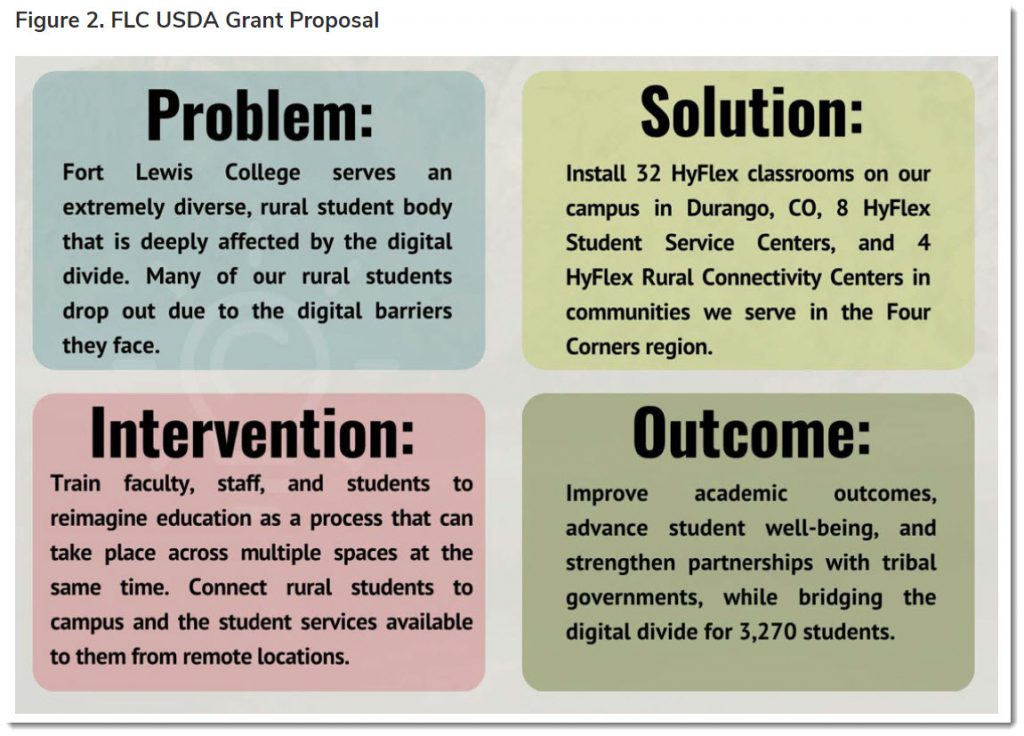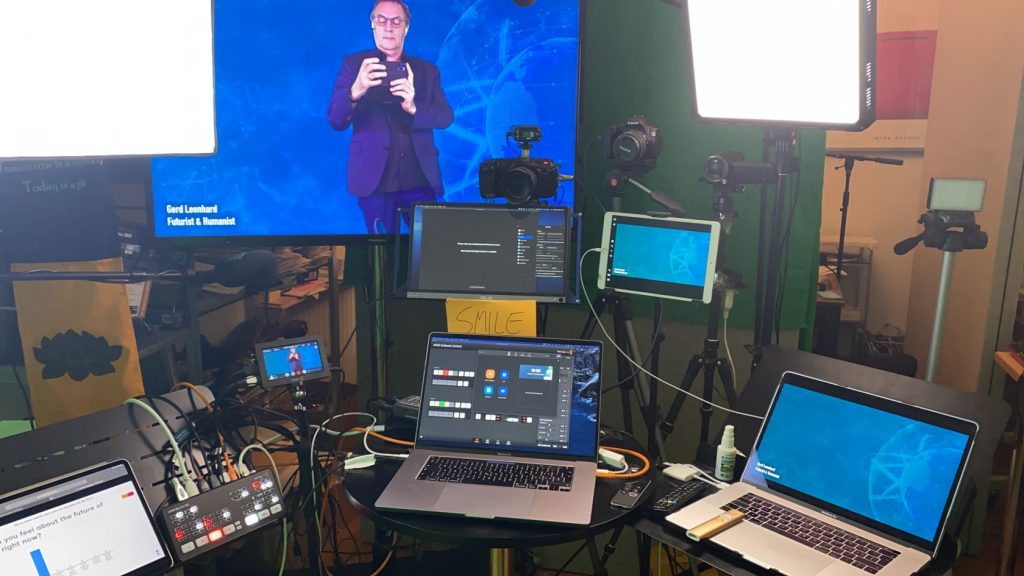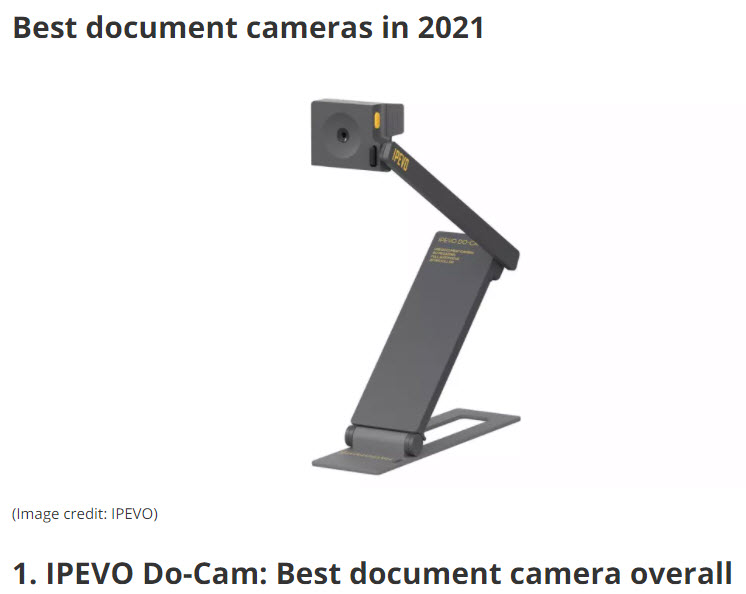How to Support Students and Families through Technology and Innovation — from thejournal.com by Jeremy Davis
Excerpt:
Here are just a few district-wide innovations that resulted from the pandemic:
- Worked with our local public access television station to broadcast district updates and educational resources. We contracted with Discovery Education to post some of their content to local channel 3 for students without home Internet access, and we built a television studio where our Innovation team worked with district teachers to produce content for local cable from 8–3 every week day.
DC: Which reminds me of this idea/graphic:
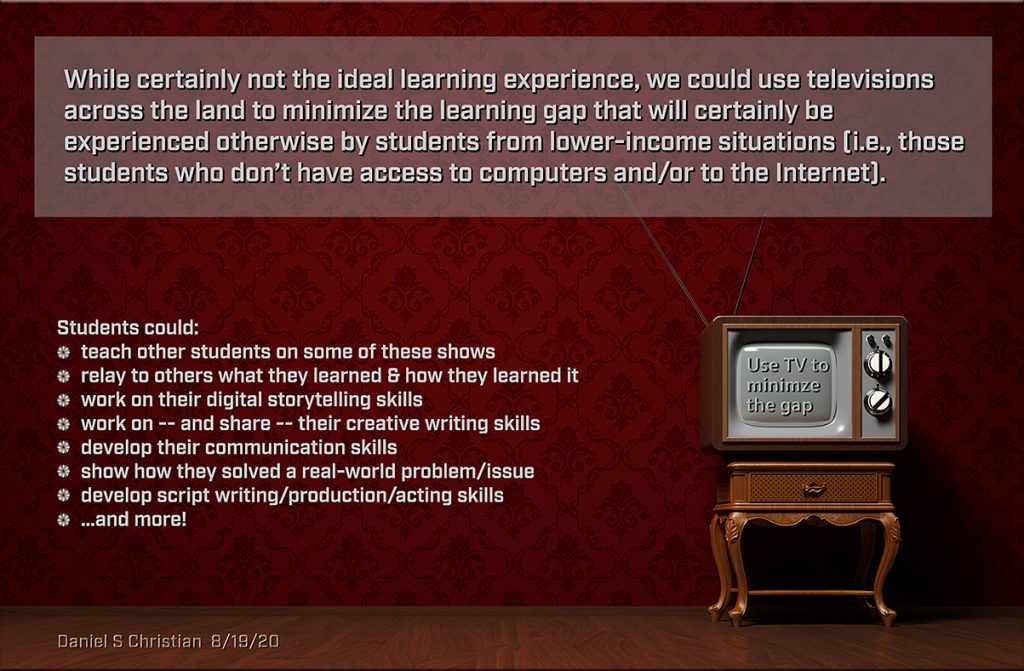
- Students were provided with Internet hotspots to ensure every student in the district could access the content and the video conferencing lessons with their teachers.
- The Educational Services department created an amazing curriculum and summer school program where students could log in and complete curricular activities as enhancements to the curriculum and throughout the summer.
- Created videos of “how” we could do both live and online teaching at the same time to help teachers feel more comfortable with the new way of teaching.









